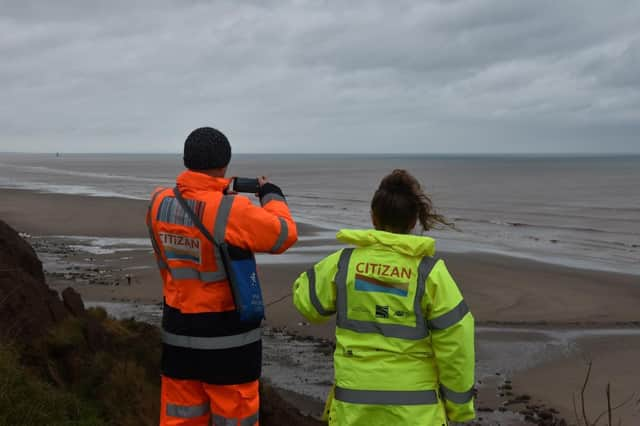The Heritage column with Chris Kolonko and Hannah Thompson: CITiZAN explores and records the East Coast’s rich archaeological past


Extending from Flamborough Head to Skegness and covering the tidal reaches of the Humber, CITiZAN has been working with local communities to explore the area’s rich archaeological, historical and natural heritage – from Palaeolithic landscapes, through Bronze Age forests to the industrial growth of the 18th and 19th centuries.
Over the past seven years, CITiZAN archaeologists and volunteers have helped to highlight the threat of coastal change on archaeology around England’s coastline.
Advertisement
Hide AdAdvertisement
Hide AdEverything from Mesolithic human footprints to Cold War nuclear monitoring posts have been recorded during this time.
Many of these sites hold considerable local or national significance, but their coastal location and vulnerability to coastal erosion means that once such sites are lost, they are lost forever.
The project was created with the aim of ensuring preservation by record, allowing future generations to learn about coastal loss and its impact on archaeological sites through records created by CITiZAN.
The Holderness coast is one of the fastest eroding coastlines in Europe, with a rate of loss of around two metres annually; though in extreme cases this can be as much as nine metres a year. This rapid erosion not only creates challenges for coastal communities, but it also has a serious impact on archaeological sites within the coastal zone.
Advertisement
Hide AdAdvertisement
Hide AdThe section of coastline from Flamborough Head to Spurn Point has a long, documented history of erosion and loss, with approximately 5km (3.2 miles) of coast lost over the course of 2,000 years.
This coastal loss has also seen the loss of 29 towns and villages over the last 1,000 years, the remains of which now reside under the North Sea.
This gives the CITiZAN North team a unique opportunity to not only investigate current coastal loss, but also historic coastal loss dating back to the Roman period and beyond.
The team has spent a lot of time monitoring and recording archaeological remains associated with the lost villages of Wilsthorpe and Auburn, south of Bridlington.
Advertisement
Hide AdAdvertisement
Hide AdBoth these villages have Medieval origins but have now been lost to coastal erosion.
By understanding how past communities reacted and adapted to coastal change, we may be able to
inform future strategies of managing coastal erosion.
If you would like to get involved with the work of CITiZAN, you can still sign up to become a network surveyor at citizan.org.uk, where you can also discover more about the archaeology of your local coastline through our series of blogs and Low Tide Trails, and learn about the history and archaeology of Bridlington’s seafront.